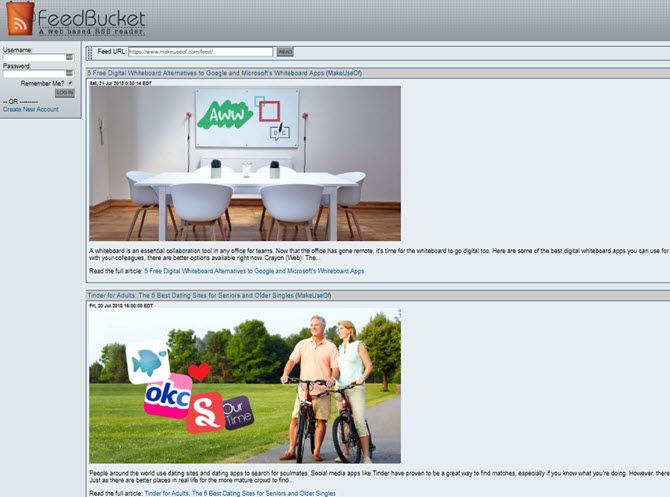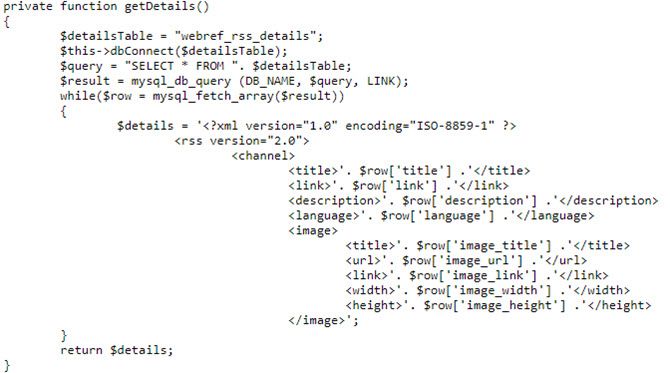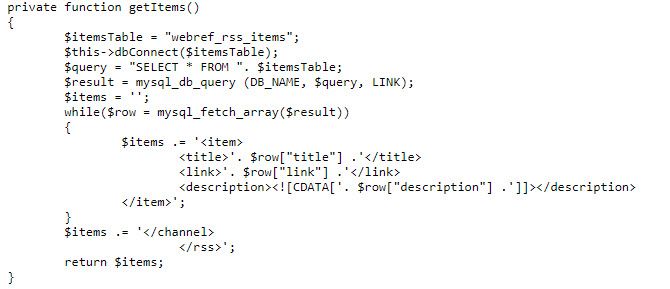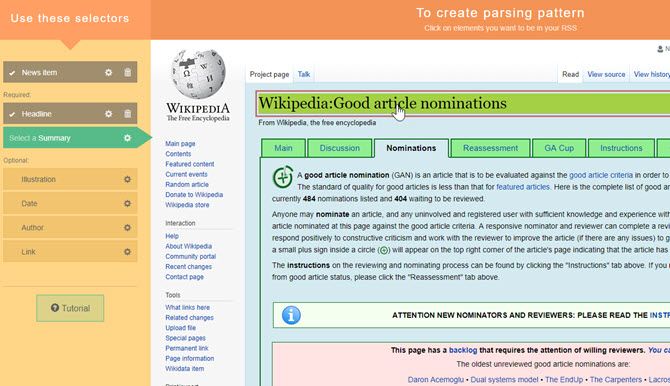How To Set Up Your Own Rss Feed
While RSS feed and feed readers aren't quite as pop as they used to be, RSS are still important for your site visitors who want to exist notified whenever your folio updates. In addition, RSS feeds can be used in a number of ways to promote your content using social media.
Let'south showtime have a await at how to create an RSS feed for your site from scratch.
An RSS feed for your site is essentially an XML file. You must adhere to a specific format for the XML file for it to be identified every bit an RSS feed.
All you have to do to create your RSS feed is to specify your data for all the necessary tags. Yous can utilize any text editor. Notepad would work fine but have a look at Notepad++.
Let'due south have a look at the tags you need to include in your XML file to create your RSS feed:
<?xml version="1.0" encoding="utf-8"?>
<rss version="2.0">
<aqueduct> The first two lines specify the XML and RSS version as yous tin can see. The third line opens a "channel" tag. This is what would incorporate all the information for your channel or website. Add these three lines as they are.
Next, some lawmaking nigh the feed:
<title>MakeUseOf RSS Feed</title>
<link>https://www.makeuseof.com/</link>
<clarification>Cool Websites, Software and Internet Tips</description>
<lastBuildDate>Midweek, July iv 2022</lastBuildDate> Those few lines specify information almost your RSS feed and your website. The championship tag houses any championship that you would like to give to your RSS feed, link tag points to your website, and the clarification tag contains a brief introduction about the RSS feed or the website. The lastBuildDate tag provides the last time any content in the channel changed. Annotation that dlastBuildDate is optional.
Whatsoever is inside your file now, lets phone call it the HEADER.
RSS Feed Format: CONTENT
Next upwardly we have the actual content of the RSS feed that volition be displayed every bit singled-out entries when viewed using a feed reader. Each entry is independent inside a pair of <item></detail> tags, and must have the following content at least:
<detail>
<title>Entry Title</title>
<link>URL Link to the entry</link>
<guid>https://www.mysite.com/?p=584674</guid>
<description>This is the clarification of the content...</description>
<pubDate>Wednesday, July four 2022</pubDate>
</item> Again the title tag would refer to the heading or your content, link is the complete spider web accost at which the item entry can be reached on your website.
The engagement has a specific format, which can see higher up. The time must exist in GMT; you can refer to RFC 822 department 5 for more details on other date-time specification formats.
Finally the description tag houses the actual content or description of the entry. Remember the above would be repeated for every entry on your website. For example if you have a blog with five articles, a complete RSS feed should have five detail tags to house v entries.
The guid tag is a unique identifier for each item. This is how many feed readers (and your own code that generates that file) determine whether the RSS file contains new items.
The pubDate tag provides the publication engagement of the content inside the channel. In the instance above, this refers to the content of the private items and each detail would take its own publication engagement.
Shut off the open up channel and rss tags (using </channel> and </rss>) and salve the file. Upload it to the advisable location on your spider web server (the site root would work fine) and you have an RSS file at your disposal.

Most mod feed readers can display a header prototype for your article if you preface the clarification with an embedded paradigm using the HTML <img> tag.
Now if you sit downwards and think about it, you would at once realize that the file you just created is static, meaning that the entries that you wrote inside the item tags would remain the same and wouldn't alter to reverberate the about recent content of your website. So before we wrap things up, we have a couple of bug that need to be addressed.
Now this would require a fair scrap of programming. If yous are not confident with your programming skills, I suggest y'all'd exist better off using a CMS like Joomla, Drupal, or best of all, WordPress (if that suits you). CMSes have a number of plug-ins for RSS feeds, and most of them even offer RSS functionality correct out of the box. Nonetheless, since you are reading this, I assume you are brewing your own solution and so let's get coding.
You tin can utilize the same programming language that y'all have used to plan your site. The concept, regardless of programming linguistic communication, is going to be the same. You'll shop set number of items that you wrote to the RSS feed during the last update to your site database. This database gets updated each time yous publish a new folio or blog entry. Each time your "rss update" script runs, you'll read those values from the database and write them to the file.
All we are going to exercise is to fetch the entries from the database and insert them into the appropriate tags. I can merely briefly outline the steps because the actual code would vary according to the programming linguistic communication you are using. The following lawmaking snippets are courtesy of WebReference.com, so for the full details while y'all're writing your ain code, make sure to go through those details.
This function will pull header details from the database and write them to the RSS file.

This part will pull all of the individual items from the database and write them to the RSS file.

In full general, regardless of what linguistic communication you use, the steps or logic for the code will exist the same:
- Connect to the database containing all the information we require (refer above).
- Fetch all the ENTRIES that you lot want to add to the RSS feed. Ordinarily it is the 10 nearly contempo ones
- Generate the showtime part of the file, i.east. the HEADER.
- For each particular, practise the following:
- Generate an <item> tag.
- Fill in the required tags and content.
- Generate the </particular> tag.
- Generate the FOOTER to close off the file.
Some other affair you need to continue in mind is that feed readers should be able to identify the generated feed as an RSS feed. At that place are plenty of ways to practise this:
- You lot can create an XML file as the RSS file and open it upward, then manually add items every time a new entry is published, or whenever the feed should be updated.
- If you using a script to create the RSS feed each fourth dimension it is requested, you could send a Content-Blazon: application/xml header before any other information.
- You could save the script every bit an XML file and have your spider web server software treat it as a scripting file. Example, adding:
in .htaccess would brand Apache treat XML files as PHP files.AddType awarding/x-httpd-php .xml
Ideally, your browser will recognize the RSS feed when the feed's URL is entered into the address field, as opposed to showing the contents of the script.
Most modern WordPress sites have an RSS feed bachelor out-of-the-box. Have a look at MakeUseOf's RSS feed contents by visiting the URL appended with "/feed" at the end.
Over the years there accept been a lot of developments around the RSS applied science. No one really needs to create a transmission RSS feed anymore, since at that place are so many services that can take any website and convert information technology into a dynamically updated RSS feed. Here are a few services online that will accomplish this (not all are gratis).
FetchRSS: This site lets y'all define elements of whatsoever web page you want to monitor for updates, and create an RSS feed out of it by clicking on elements of the folio.

Feed Creator: This service, created by FiveFilters.org, lets you blazon in the page URL, and filters for guid or grade aspect or URL segments.
Feed43: Allows you to pull in HTML from whatsoever web page and create snippets for filters that identify any new items on the page. The costless version lets you create express item feeds that update every vi hours or more.
Feedity: This service is similar to FetchRSS in that it lets you graphically highlight sections of a web page to monitor for updates.
There's a misconception that RSS is onetime technology, but it'south remained a core part of the spider web for a reason. It's why nigh CMS systems integrated RSS generation into their core parcel. That's because RSS is the easiest method bachelor to let your fans and readers subscribe to receive notifications whenever your site updates.
That keeps your visitors coming back and loyal. So make employ of RSS, even if only a small portion of your visitors want information technology. After all, loyal visitors are difficult to come past.
If yous want to learn more about easily running a website, make sure to check out our ultimate WordPress guide.
Well-nigh The Author
How To Set Up Your Own Rss Feed,
Source: https://www.makeuseof.com/tag/how-to-create-an-rss-feed-for-your-site-from-scratch/
Posted by: grahamyousand.blogspot.com


0 Response to "How To Set Up Your Own Rss Feed"
Post a Comment